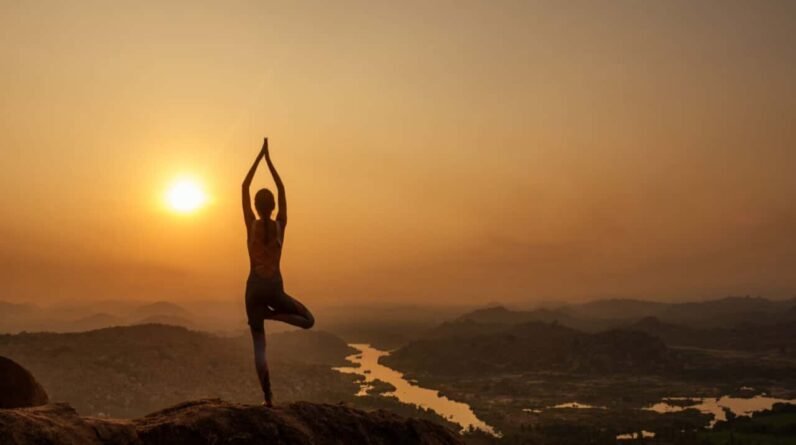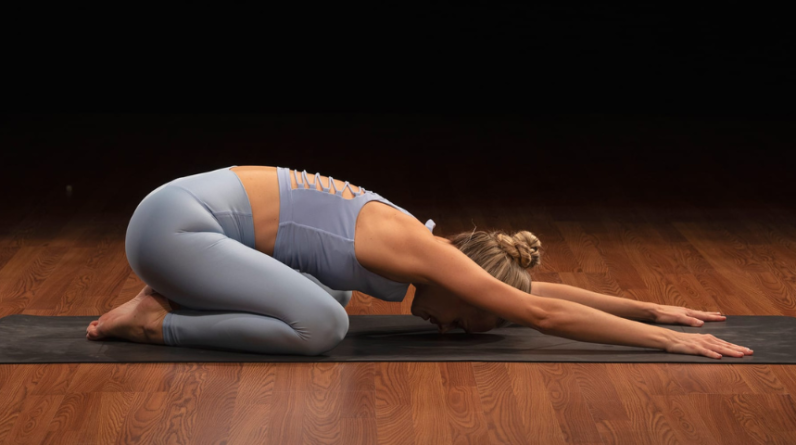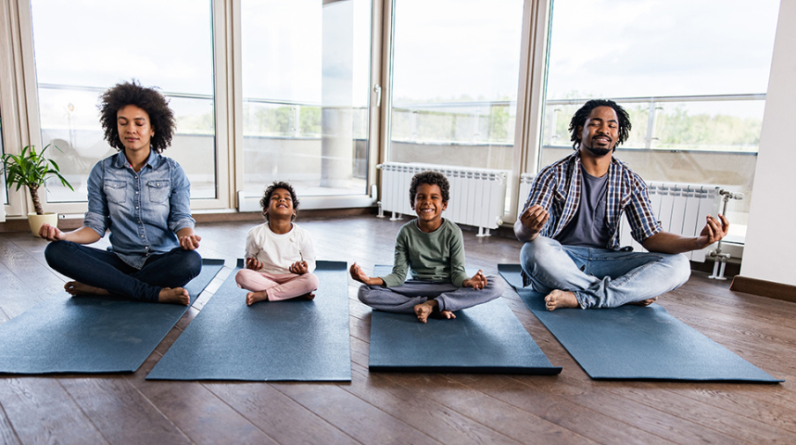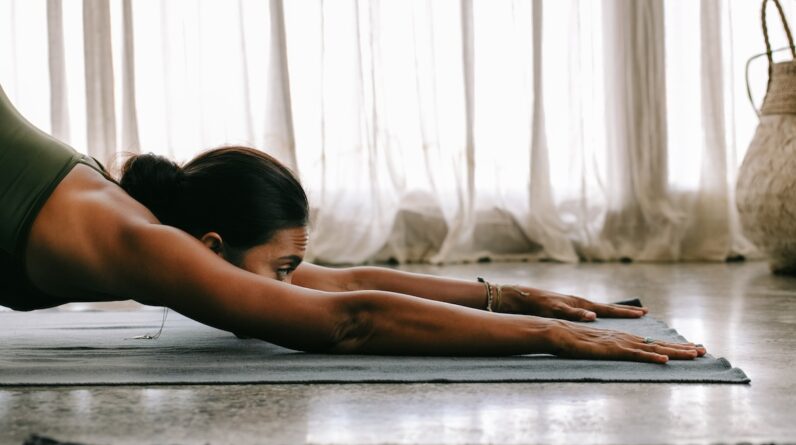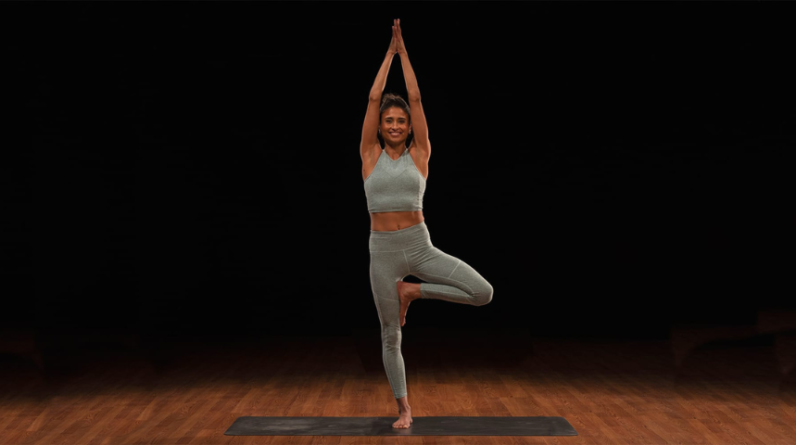
Tree pose is an iconic balancing posture in yoga. Known in Sanskrit as vrksasana (also spelled vriksasana and vrikshasana), tree pose “is one of the first balance poses a practitioner learns in yoga,” says Stephanie Saunders, BODi Vice President of fitness content and a certified yoga instructor.
It’s aptly named: Your legs are the trunk of your tree pose, your standing foot becomes your roots, and your arms are the branches. Tree pose is a standing balance that’s easy to customize and is appropriate for students of all levels.
Tree Pose (Vrksasana): Step-by-Step Instructions
- Stand tall in mountain pose (tadasana) — chest up, big toes touching, heels slightly apart — near the top of your mat, with your palms together in front of your chest.
- Shift your weight onto your left foot, and raise your right knee.
- Swing your right knee out to the right, and place the sole of your right foot against the inside of your left calf or, with the help of your hand, your left thigh. (Do not place it against your knee.)
- Keep your left leg strong and straight without locking your knee as you gaze forward at a stationary target to help you balance.
- When you feel stable, bring your hands into position: at your heart (in anjali mudra as demonstrated in this clip from Yoga52), directly overhead, or straight out to your sides.
- Hold for at least five breaths, then switch sides and repeat.
How to Make Tree Pose Easier
Balancing in tree pose isn’t supposed to be easy the first time you do it — that’s how you get stronger. Here are some tips to modify it.
- If balance is hard for you today (it happens!), take tree pose next to a wall.
- Bringing your foot against your inner thigh requires a certain amount of hip flexibility. Saunders suggests keeping your foot below your knee or even using it as a “kickstand” on the ground (right heel against left ankle) until your hips open up. This prevents you from having to tilt your pelvis to move your foot into place.
How to Make Tree Pose Harder
It’s simple to make tree pose (or any balancing pose) harder — here’s how you can intensify vrksasana.
- Use only lower-body and core strength, rather than your hand, to maneuver your lifted foot into place.
- Stand with your lifted foot hovering just inside the thigh or calf of your standing leg without letting it actually make contact with either.
- Close your eyes to challenge your balance — or lift your toes.
- Balance on a block or softer surface, forcing the muscles supporting your feet and ankles to work harder.
Beginner’s Tips for Doing Tree Pose
New yogis often try to get into the “final” version of tree pose before their hips are ready. To position your foot higher on your leg, you need to work on externally rotating your femur in the hip socket. Focus on opening your hip before putting your leg in place to keep your knee and hip safe and healthy.
Here are some additional considerations when performing tree pose, especially when you’re just beginning.
- Avoid placing your foot against your knee. Higher or lower are both acceptable positions, but placing your foot on your knee puts that delicate joint at risk for injury.
- Refrain from locking your standing knee. While it might feel more secure, it isn’t safe — especially if you start to sway. (And you will, no matter how long you’ve been practicing.)
- Breathe! Beginners tend to hold their breath in balancing poses.
- Don’t give up the pose when you start to falter. Remember that trees sway in the wind, and they usually manage to stay upright. Wiggles and shakes are strength in progress!
- If you do lose your balance, take a breath and start over.
Benefits of Tree Pose
Whether it’s your first or hundredth time doing tree pose, you can enjoy the following benefits of tree pose.
Promotes stability
“Although frustrating at times, balance affects every other movement our bodies make,” says Saunders. “You can increase the quality of your movements and help avoid injuries with just a bit of balance training. Tree is a great place to begin, and creating more stability and strength in your feet and ankles will make all balance poses more achievable.”
Strengthens lower body and core
To stay balanced, you need to activate your core and fire up the small muscles supporting your feet and ankles.
“Tree pose uses almost every muscle in your lower body to help maintain neutral alignment of the spine and pelvis. The lifted leg alone uses five different joint actions, and at least nine different muscles.”
You’ll feel tree pose in your quadriceps and adductors, and the entire back sides of your legs — from your calves up to your glutes.
Opens the hips
To position your foot against your inner thigh, you need to be able to externally rotate your thigh bone in the hip socket. Tight hips limit your ability to get deeper into a number of poses, so include vrksasana in your regular yoga practice and notice how it begins to open your hips. (Just make sure you do it on both sides!)


